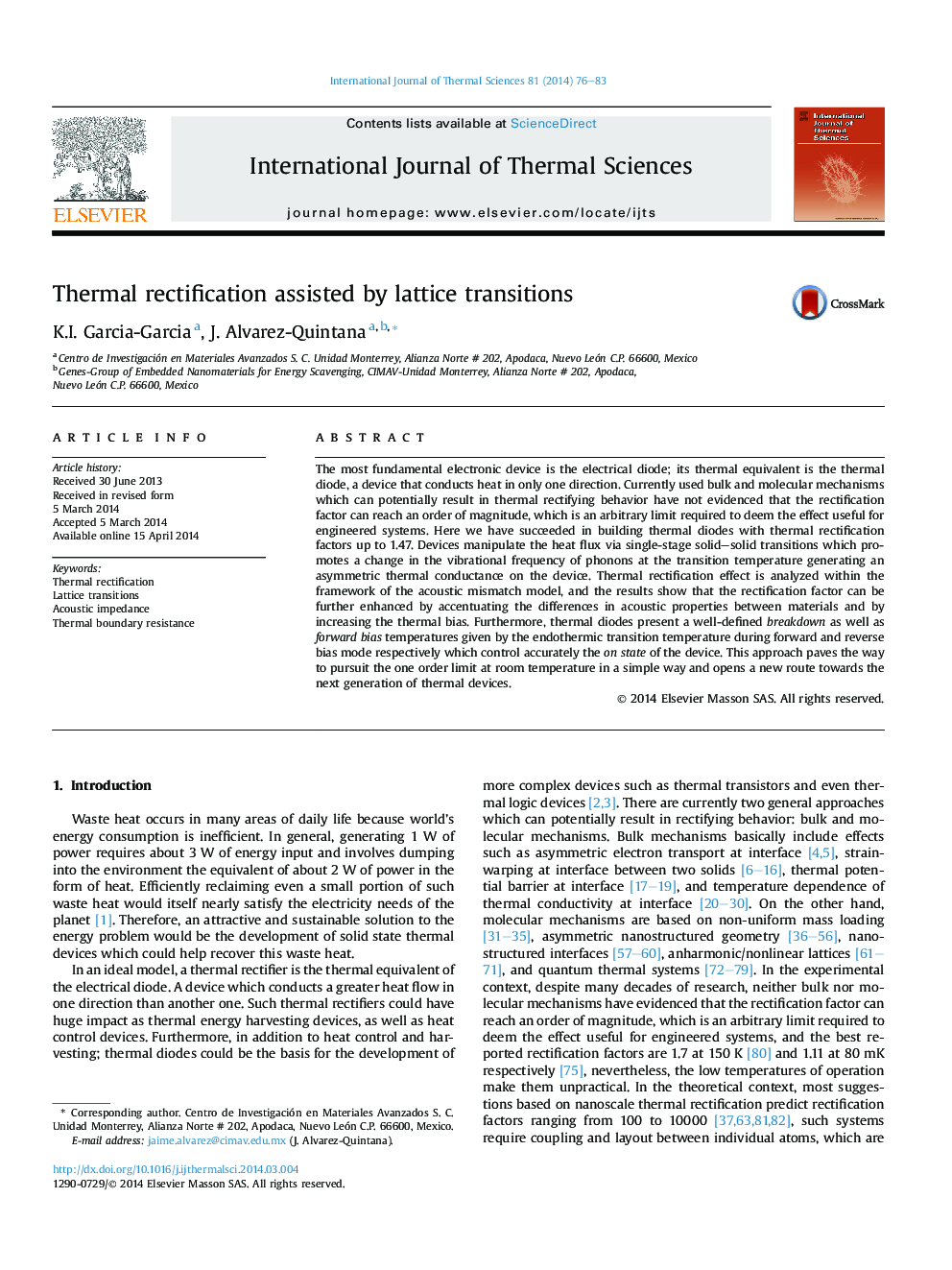| Article ID | Journal | Published Year | Pages | File Type |
|---|---|---|---|---|
| 668180 | International Journal of Thermal Sciences | 2014 | 8 Pages |
Abstract
The most fundamental electronic device is the electrical diode; its thermal equivalent is the thermal diode, a device that conducts heat in only one direction. Currently used bulk and molecular mechanisms which can potentially result in thermal rectifying behavior have not evidenced that the rectification factor can reach an order of magnitude, which is an arbitrary limit required to deem the effect useful for engineered systems. Here we have succeeded in building thermal diodes with thermal rectification factors up to 1.47. Devices manipulate the heat flux via single-stage solid-solid transitions which promotes a change in the vibrational frequency of phonons at the transition temperature generating an asymmetric thermal conductance on the device. Thermal rectification effect is analyzed within the framework of the acoustic mismatch model, and the results show that the rectification factor can be further enhanced by accentuating the differences in acoustic properties between materials and by increasing the thermal bias. Furthermore, thermal diodes present a well-defined breakdown as well as forward bias temperatures given by the endothermic transition temperature during forward and reverse bias mode respectively which control accurately the on state of the device. This approach paves the way to pursuit the one order limit at room temperature in a simple way and opens a new route towards the next generation of thermal devices.
Related Topics
Physical Sciences and Engineering
Chemical Engineering
Fluid Flow and Transfer Processes
Authors
K.I. Garcia-Garcia, J. Alvarez-Quintana,
